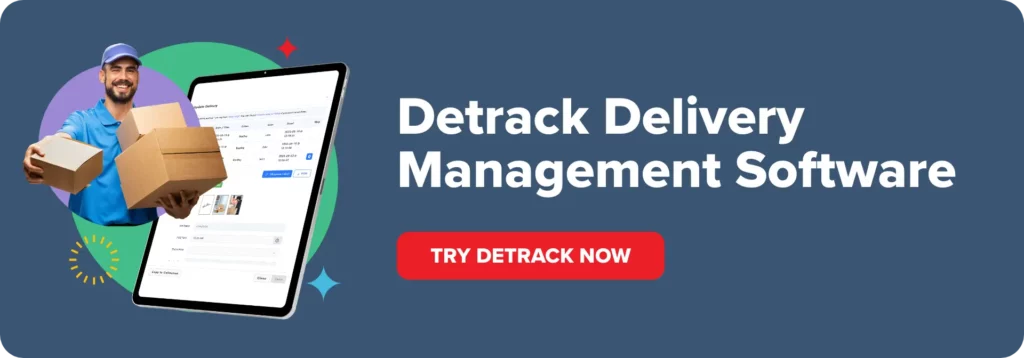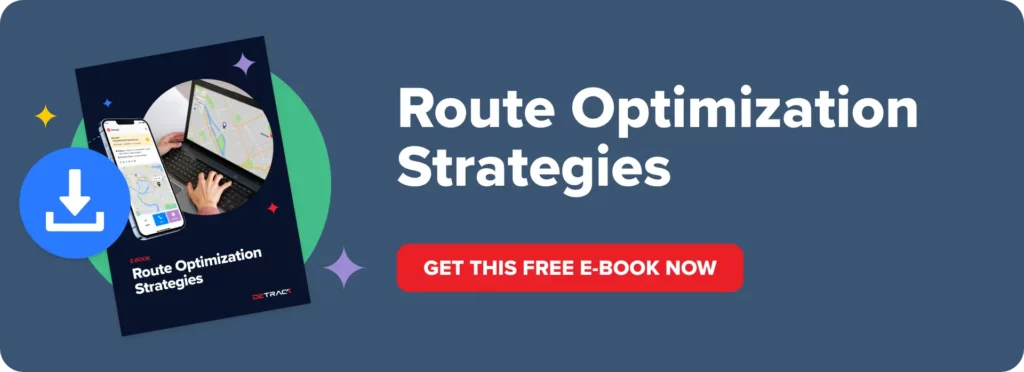Traffic congestion in the United States is more than a daily inconvenience—it’s a significant challenge impacting millions of commuters and businesses. The frustration of being stuck in endless lines of cars, inching along highways, and enduring long delays has become an unfortunate norm for many.
In this blog post, we’ll explore some practical solutions and strategies to help you efficiently pass through the worst traffic in the US.
Don’t just drive, thrive!
Empower your drivers with Detrack’s fleet management for operational excellence.
Understanding Traffic Congestion: What Causes It?
Traffic congestion occurs when the volume of vehicles on a road network exceeds its capacity, resulting in slower speeds, longer trip times, delivery delays, and sometimes complete standstills. Several factors contribute to traffic congestion, including:
- High Volume of Vehicles: Roads and highways designed for a specific capacity can become overwhelmed when too many vehicles use them simultaneously, especially during peak hours.
- Population Growth: Urbanization and population increases lead to more vehicles on the road, putting additional strain on transportation infrastructure.
- Inadequate Infrastructure: Poorly planned or outdated road systems, insufficient lanes, lack of proper signaling, and inadequate public transportation options contribute to congestion.
- Traffic Incidents: Accidents, breakdowns, construction, and roadwork can significantly disrupt traffic flow and cause congestion, sometimes for extended periods.
- Distracted Driving: Distractions like smartphone usage or other inattentive behavior by drivers can lead to sudden braking or erratic driving, causing slowdowns or accidents.
- Traffic Signal Issues: Malfunctioning lights or poorly synchronized signals can disrupt traffic flow at intersections.
- Public Transportation Challenges: In cities where public transportation is not efficient or accessible, more people rely on private vehicles, contributing to congestion.
- Weather Conditions: Heavy rain, snow, fog, or severe weather can reduce visibility and road traction, leading to potential accidents.
Addressing traffic congestion often involves a combination of solutions, such as improving public transportation, implementing traffic management systems, expanding road capacity, promoting alternative transportation modes like cycling and walking, adopting smart city technologies, and encouraging flexible work schedules or remote work to reduce rush-hour traffic.
Top 10 Cities With The Worst Traffic In The US
1. Boston, MA
Boston’s traffic congestion is deeply rooted in its historical layout, which doesn’t easily accommodate the modern vehicular volume. The city’s dense population, limited road expansions, and ongoing construction projects significantly contribute to prolonged travel times.
The intricate roadways and outdated infrastructure often lead to bottlenecks, causing commuters and businesses to incur substantial economic losses due to wasted hours in traffic and increased fuel consumption.
2. Washington, DC
The nation’s capital faces extensive traffic congestion due to many factors. High population density, inadequate road infrastructure, and limited public transportation options contribute to peak-hour gridlock. Traffic often gets bottlenecked around key government and tourist areas, increasing overall congestion.
The reliance on automobiles and insufficient alternative transportation modes further exacerbate the problem, leading to significant time losses and economic impacts for commuters and businesses.
3. Chicago, IL
Chicago experiences severe traffic congestion due to a convergence of factors. The city’s high volume of commuters, extensive road construction, and limited public transit in certain areas contribute to prolonged travel times.
The complex layout of the city’s roadways, coupled with frequent road repair projects, exacerbates traffic issues, resulting in substantial economic losses for individuals and businesses due to increased fuel consumption and lost productivity.
4. New York City, NY
New York City’s traffic congestion is a product of its sheer population density and the vast number of vehicles navigating through a complex network of roads, bridges, and tunnels.
Ongoing construction, frequent gridlocks, and congestion during rush hours lead to extensive commuter delays. The economic impact is significant, with wasted hours in traffic translating to considerable financial losses for individuals and businesses due to increased fuel expenses and decreased productivity.
5. Los Angeles, CA
Los Angeles grapples with notorious traffic congestion owing to its heavy reliance on cars, expansive urban sprawl, and limited public transit alternatives. The city’s crowded freeways, surface streets, and a high commuter volume contribute to prolonged travel times.
Traffic jams during rush hours are frequent, resulting in significant economic losses for residents and businesses due to increased fuel consumption and lost productivity.
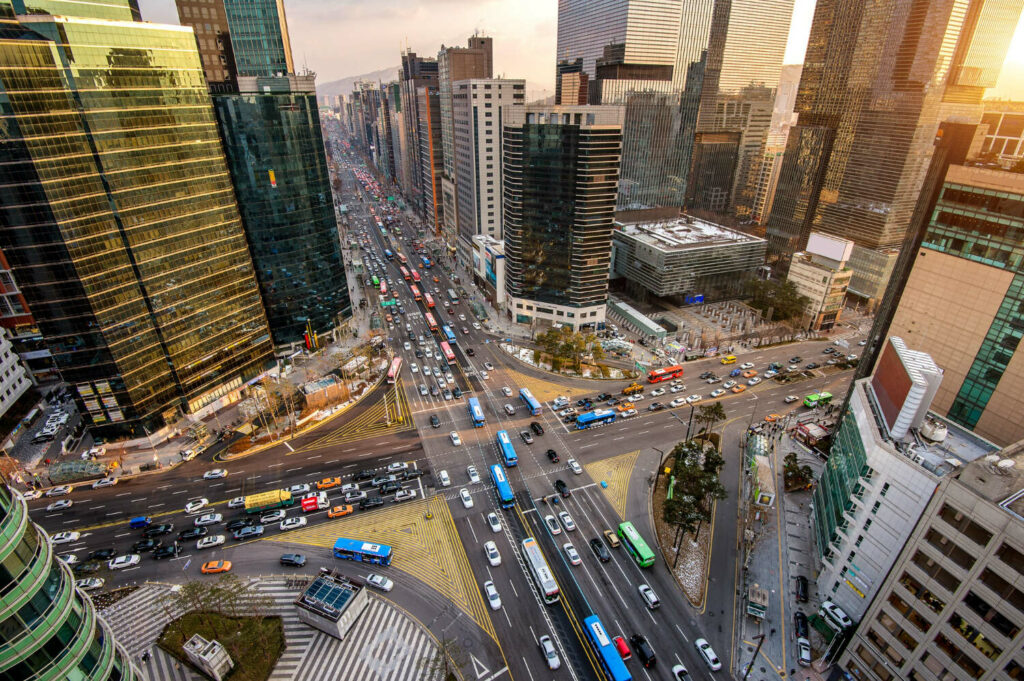
6. Seattle, WA
Seattle’s rapid population growth has exacerbated traffic congestion by limited road infrastructure and geographic constraints. The city’s efforts to expand and improve infrastructure struggle to keep pace with the increasing number of commuters, resulting in lengthy delays.
Geographical features like bodies of water restrict road expansion, contributing to prolonged travel times and economic losses due to increased fuel consumption and decreased productivity.
7. Pittsburgh, PA
The dataset doesn’t provide specific information regarding time lost and annual costs for Pittsburgh.
Pittsburgh contends with traffic congestion due to its hilly terrain, complex road systems, and bottlenecks throughout the city, contributing to increased travel times and economic impacts for commuters and businesses.
8. San Francisco, CA
San Francisco faces traffic congestion issues stemming from its compact layout, limited space for road expansion, and increased traffic from residents and commuters. The city’s hilly topography and high demand for transportation services lead to prolonged travel times.
Despite ongoing efforts to improve infrastructure, substantial time losses and economic costs persist for commuters and businesses due to increased fuel consumption and decreased productivity.
9. Philadelphia, PA
Philadelphia struggles with traffic congestion caused by historical street layouts, increased population density, and automobile reliance. The city’s road infrastructure faces challenges in accommodating the growing number of vehicles, resulting in significant time losses for commuters.
Economic impacts include increased fuel expenses and reduced productivity for individuals and businesses due to extended peak-hour travel times.
10. Portland, OR
Portland contends with traffic congestion due to increased urbanization, insufficient road infrastructure, and limitations in public transportation systems. Efforts to promote alternative transportation modes aim to alleviate congestion, but substantial time losses and economic costs persist.
The city’s ongoing development needs to meet the demands of a growing population, resulting in prolonged travel times and economic losses for commuters and businesses.
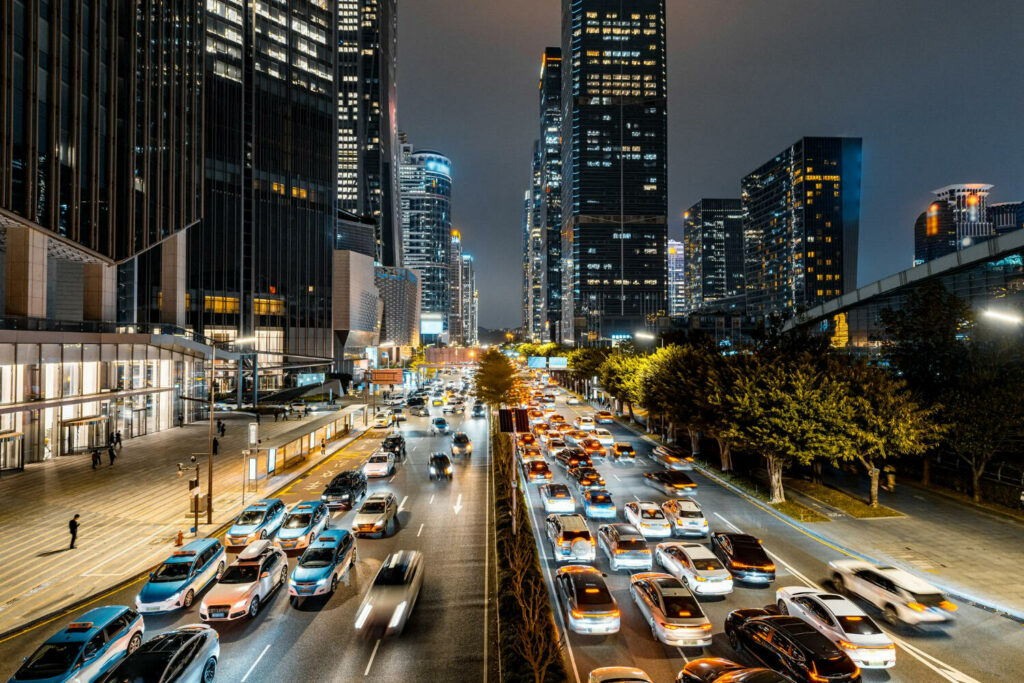
Strategies to Mitigate Traffic Impact
Navigating traffic congestion demands strategic approaches for businesses reliant on transportation and logistics. Employing effective strategies can significantly alleviate the impact of congestion on deliveries, operational efficiency, and overall transportation effectiveness. Here’s a comprehensive breakdown:
Implementing Efficient Route Planning
Efficient route planning involves the optimization of delivery routes to reduce travel time, fuel consumption, and environmental impact. Utilizing advanced route optimization tools and software aids in creating streamlined routes that circumvent congested areas.
These tools, including those provided by Detrack, prioritize time-efficient delivery paths, boosting operational efficiency.
Utilizing Traffic Prediction Tools
Predictive analytics tools are pivotal in anticipating traffic patterns and congestion points. Integrating Detrack’s traffic prediction capabilities allows for proactive decision-making in route planning.
This assists businesses in identifying potential bottlenecks and making route adjustments ahead of time, minimizing delivery delays and ensuring smoother operations.
Adopting Flexible Scheduling for Deliveries
Flexible scheduling, supported by Detrack’s dynamic scheduling features, empowers businesses to adjust delivery times in response to real-time traffic conditions.
This adaptive approach ensures optimal routing, aligning deliveries with traffic fluctuations to minimize delays and maintain timely service.
Leveraging Real-Time Traffic Data
Real-time traffic data plays a crucial role in dynamically adapting delivery routes. Tools like Detrack, integrated with live traffic updates, allow for immediate route adjustments.
This empowers drivers to navigate away from congested routes, ensuring that deliveries are on time despite unexpected traffic conditions.
Investing in Advanced Logistics Software
Advanced logistics software, such as Detrack, offers a comprehensive suite of tools for efficient fleet management, real-time tracking, and data analytics.
Detrack’s solutions provide valuable insights into traffic patterns, empowering informed decisions that streamline delivery processes. These solutions optimize operations, improving overall delivery efficiency and customer satisfaction.
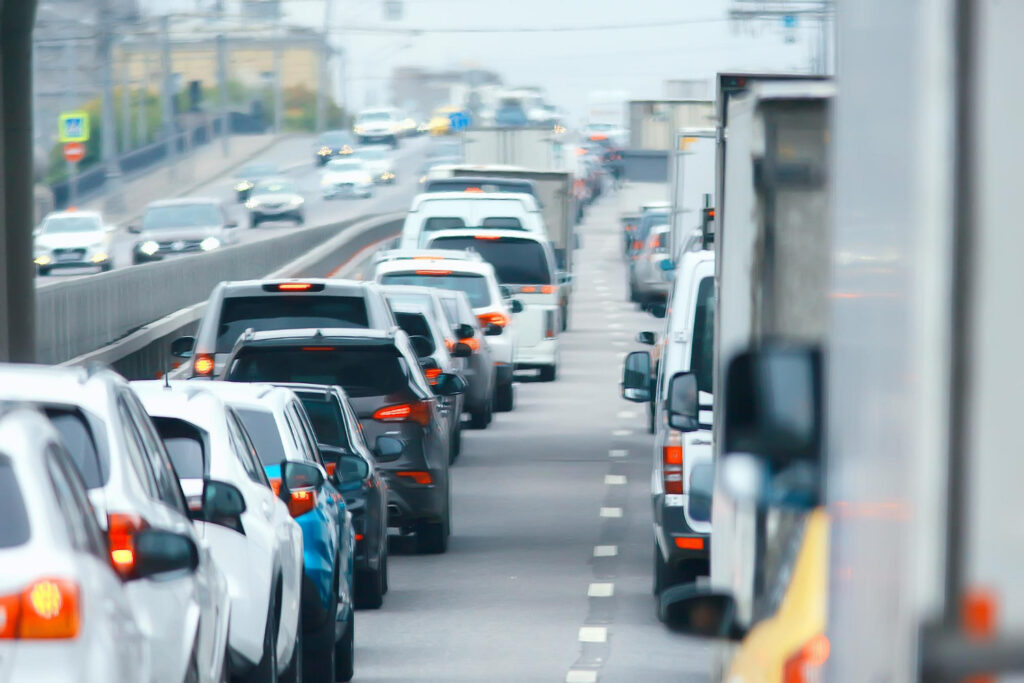
Exploring Alternative Transportation Modes
Exploring alternative transportation modes like bicycles, electric vehicles, or drones for last-mile deliveries can reduce congestion and environmental impact.
Integrating these modes, where feasible, can significantly contribute to smoother traffic flow, especially in densely populated urban areas.
Fostering Strong Communication with Drivers
Effective communication channels between dispatchers and drivers are crucial in navigating challenges.
Providing drivers with real-time traffic updates and alternative route suggestions, facilitated by Detrack, enhances their decision-making abilities. This ensures smoother operations and timely deliveries, reducing the impact of delays.
Utilizing Congestion Pricing and Toll Roads
Implementing congestion pricing or utilizing toll roads incentivizes drivers to opt for less congested routes or off-peak delivery times.
This approach encourages redistribution and manages peak-hour congestion, improving overall traffic flow.
Embracing Technology for Smarter Navigation
Integrating innovative navigation technologies into vehicles enables more efficient and adaptive navigation.
AI-driven navigation systems, supported by Detrack’s capabilities, optimize routes based on real-time traffic updates, guiding drivers through the most efficient paths even amid changing traffic conditions.
Encouraging Off-Peak Deliveries
Encouraging off-peak deliveries reduces traffic congestion during peak hours.
This strategy minimizes delays and supports smoother traffic flow, benefitting both businesses and urban infrastructure.
Navigate Through the Worst Traffic in the US with Detrack
As businesses grapple with the challenges of heavy traffic in major US cities, finding effective solutions becomes imperative. The strategies discussed offer a roadmap to mitigate the impact of congestion on deliveries and transportation efficiency.
However, amidst these challenges, having a reliable ally in the form of advanced logistics software, such as Detrack, can significantly transform how businesses navigate traffic woes.
Detrack’s suite of comprehensive tools plays a crucial role in enhancing operational efficiency and streamlining delivery processes. By integrating Detrack into the logistics framework, businesses gain access to cutting-edge functionalities.
Don’t just drive, thrive!
Empower your drivers with Detrack’s fleet management for operational excellence.

